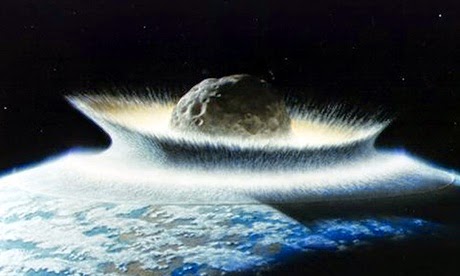
One of the things that distinguishes Earth from other planets is its plate tectonics. But how did this moving jigsaw surface begin? New research suggests that a 3.26 billion-year-old asteroid impact may have kick-started the process.
The impact crater has long since gone (recycled by plate tectonics), but Norman Sleep and Donald Lowe, both at Stanford University, have been able to study this cataclysmic event by looking at the fall-out it produced: tiny spherical rocks which rained down into an ocean, in what is now South Africa. These little grains, and the shattered rocks surrounding them, tell the story of what was probably one of the last major asteroid impacts during Earth’s violent early history.
And what an impact it was. Hurtling in at 72,000km per hour, this 37km wide asteroid (four times larger than the one that wiped out the dinosaurs) smashed into Earth, vaporising rock and creating a 500km wide crater. The impact triggered magnitude 10.8 earthquakes (100 times larger than the 2011 Japanese earthquake), set off tsunamis, and heated the atmosphere enough to make oceans boil.
Crucially the findings, published in the journal Geochemistry, Geophysics, Geosystems, also indicate that the impact could have initiated plate tectonics. Since then the heat from Earth’s mantle has kept the plates in a state of continuous agitation. Without that impact Earth’s surface might be more akin to Mars or Venus. And without the constant chemical recycling that plate tectonics brings (which stabilises Earth’s climate) we probably wouldn’t be here.
Note : The above story is based on materials provided by Kate Ravilious “The Guardian”










